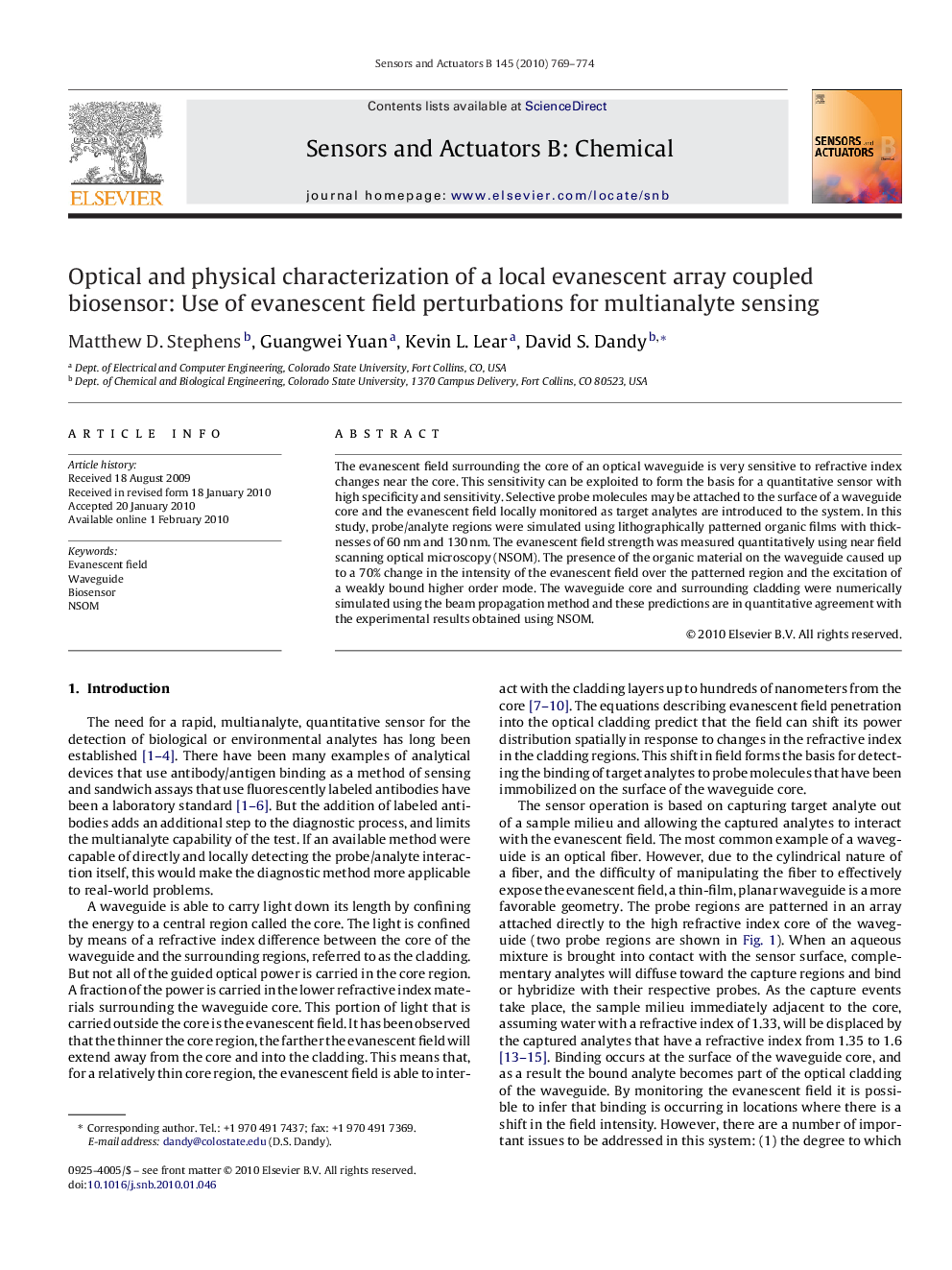| Article ID | Journal | Published Year | Pages | File Type |
|---|---|---|---|---|
| 751335 | Sensors and Actuators B: Chemical | 2010 | 6 Pages |
The evanescent field surrounding the core of an optical waveguide is very sensitive to refractive index changes near the core. This sensitivity can be exploited to form the basis for a quantitative sensor with high specificity and sensitivity. Selective probe molecules may be attached to the surface of a waveguide core and the evanescent field locally monitored as target analytes are introduced to the system. In this study, probe/analyte regions were simulated using lithographically patterned organic films with thicknesses of 60 nm and 130 nm. The evanescent field strength was measured quantitatively using near field scanning optical microscopy (NSOM). The presence of the organic material on the waveguide caused up to a 70% change in the intensity of the evanescent field over the patterned region and the excitation of a weakly bound higher order mode. The waveguide core and surrounding cladding were numerically simulated using the beam propagation method and these predictions are in quantitative agreement with the experimental results obtained using NSOM.
